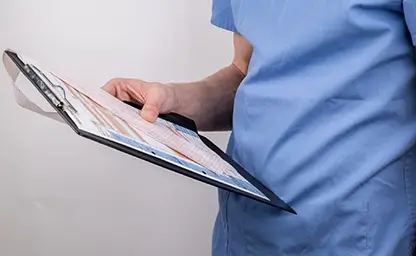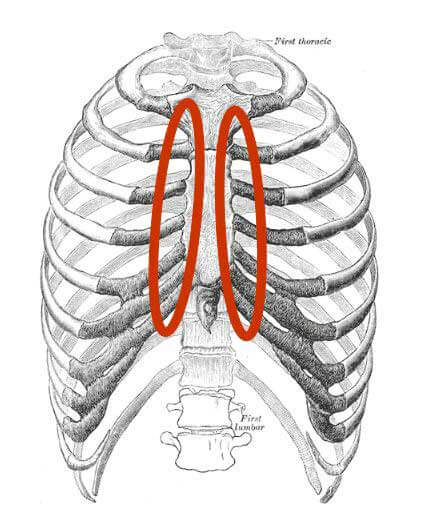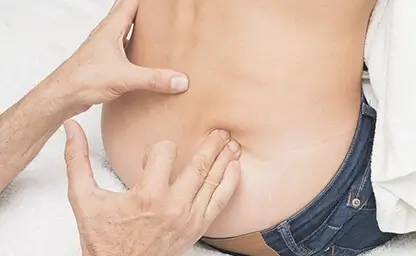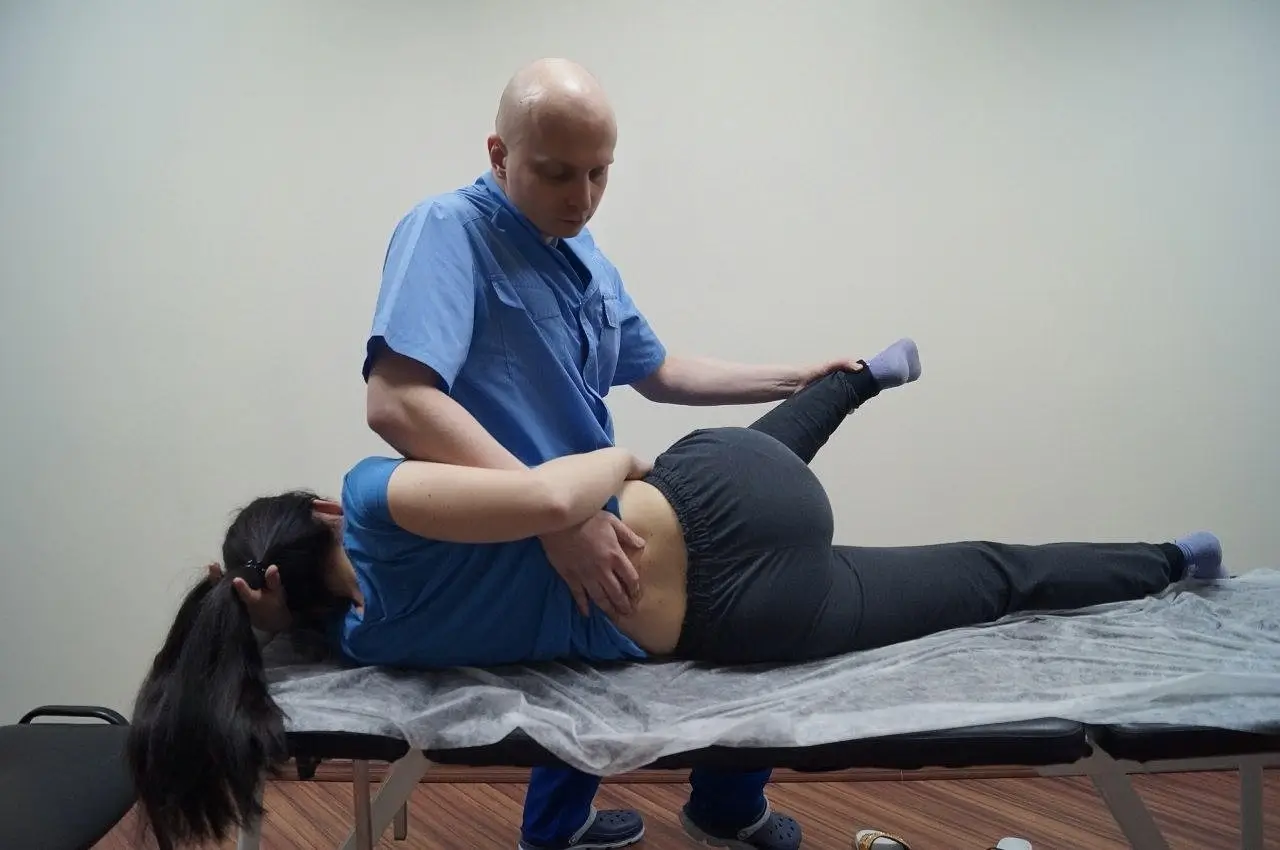

Сhest pain during deep breath
A 40-year-old male, a soldier. Complaints: Pain in the chest during deep breathing on both sides near the sternum, unable to take a full breath, persisting for about two years. Additionally, severe and frequent headaches, neck pain with restricted side-to-side motion, and frequent hand numbness. He has been at war for four years, losing weight from 80 to 60 kg during this time, experiencing multiple concussions, hypothermia in trenches, and enduring the constant burden of carrying heavy combat gear, often around the clock. Six months ago, he suffered a severe penetrating injury with a pelvic bone fracture, but most of the above symptoms existed before this.
 Objective Examination: The patient has an athletic build but appears tense and hunched. An attempt to take a deep breath causes pain on both sides parallel to the sternum, from the upper to lower ribs, rated at 6-7 out of 10. Thoracic rotation is restricted and causes pain posteriorly, paravertebrally, with extension also limited by spinal pain and pulling sensations in the front. The head is positioned forward, with neck rotations and extensions limited by pain, while forward flexion causes pulling pain in the muscles.
Objective Examination: The patient has an athletic build but appears tense and hunched. An attempt to take a deep breath causes pain on both sides parallel to the sternum, from the upper to lower ribs, rated at 6-7 out of 10. Thoracic rotation is restricted and causes pain posteriorly, paravertebrally, with extension also limited by spinal pain and pulling sensations in the front. The head is positioned forward, with neck rotations and extensions limited by pain, while forward flexion causes pulling pain in the muscles.
Numerous myofascial trigger points were found in the neck, highly painful and active, causing referred headaches characteristic of the patient when pressed. Neural mobility tests of the brachial plexus are strongly positive, with movements limited by pain throughout the arm, especially in both ulnar nerves. Lower back and abdominal pain are also reported, where multiple scars from injuries and subsequent surgeries are observed. However, due to time constraints, these areas were not addressed.
Diagnosis: Multiple functional blockages of ribs and corresponding thoracic vertebrae in the upper, mid, and lower thoracic regions, cervical dysfunctions, numerous myofascial pains with referral to the head, significant nerve mobility restrictions in the brachial plexus, and complex posture disturbances – upper crossed syndrome, hunched posture, and forward head position. There is likely some form of PTSD, but that requires attention from a different specialist.
Treatment: Mobilization of dysfunctional vertebral-motor segments in the thoracic and cervical regions, mobilization of blocked ribs and sternum using respiratory and motor synergies, myotherapy techniques, and fascial techniques for identified trigger points and fascial restrictions, as well as nerve interface opening and sliders for peripheral arm nerves.
 Results: Almost complete recovery of painless breathing, initially on the left side, which was previously more restricted, and later on the right. Improved range of motion in the most restricted directions in the neck and thoracic region, reduced trigger point activity, and decreased stiffness due to fascial restrictions.
Results: Almost complete recovery of painless breathing, initially on the left side, which was previously more restricted, and later on the right. Improved range of motion in the most restricted directions in the neck and thoracic region, reduced trigger point activity, and decreased stiffness due to fascial restrictions.
The patient and his wife were educated on the causes and mechanisms of the issues, given recommendations for therapeutic exercises, including breathing techniques, to improve posture and nerve mobility, and shown how to manage myofascial muscle dysfunctions. For the first time in two years, he can breathe deeply without pain.
Sharp pain in chest during deep breath. Conclusions.
Conclusions: This case is notable for the extent and number of dysfunctions. Before service, the patient was a healthy athlete, never significantly ill or symptomatic. However, extreme, almost inhuman stressors could not pass without consequence. It is sad to realize that this applies not only to his body but also to his soul, and there are hundreds of thousands of such individuals...
A previously described case on this site involved a single blocked rib, but here we see global movement restriction of the entire chest, where everything converged: constant heavy gear carriage, concussions and falls, progressively worsening hunched posture, and, of course, intense stress directly affecting the diaphragm and respiratory muscles.

Grigori Tafi
Osteopath, sports medicine doctor
15 years of experience in osteopathy and manual therapy. Read more...
☛ Stuck neck pain on one side.
☛ Right side lower back pain when bending over.




